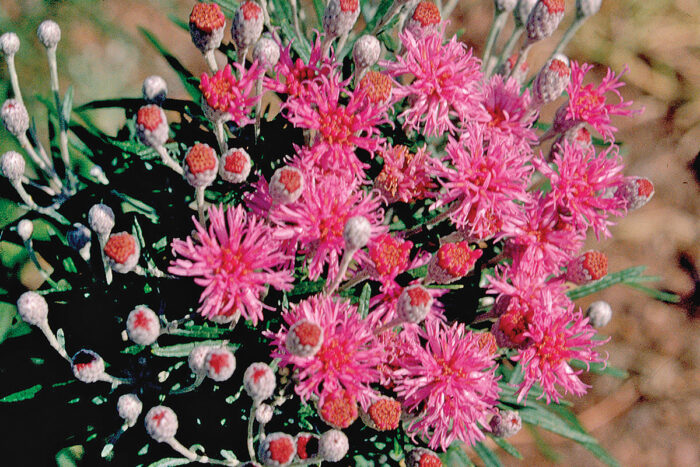
1. Spring Obedient Plant

Name: Physostegia intermedia
Zones: 6–9
Size: 3 to 4 feet tall and wide
Conditions: Full sun to partial shade; moist soil
Native Range: Southern United States
Spring obedient plant makes a lovely addition to wetland gardens with its long terminal spikes of pink or purple flowers. It is easy to grow and can tolerate light shade and moist, heavy soils. Bees, butterflies, and hummingbirds are attracted to its tubular blooms. Spring obedient plant blooms from early spring through midsummer, while its cousin, fall obedient plant (P. virginiana), blooms from late summer into fall.
2. Wooly Ironweed
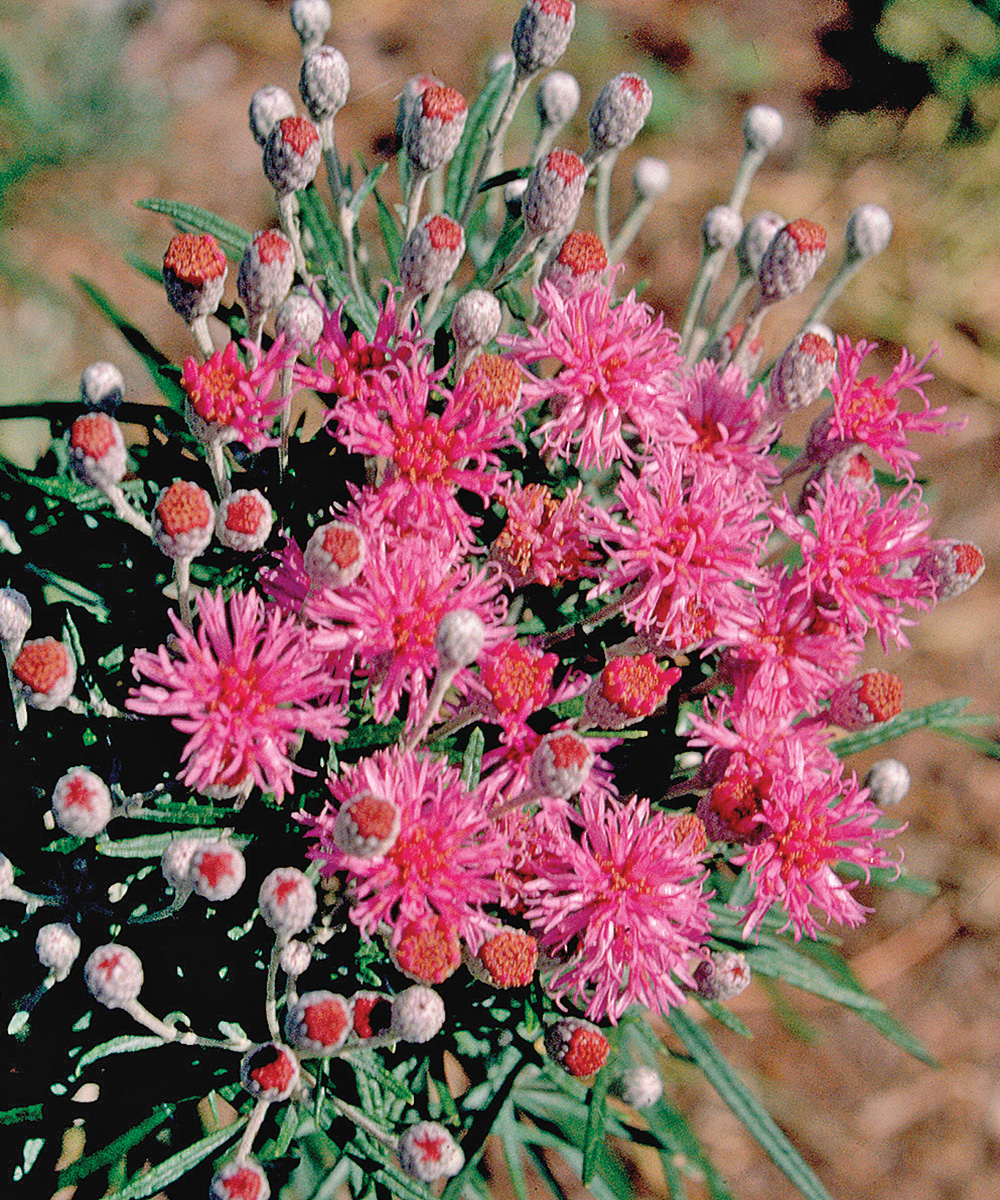
Name: Vernonia lindheimeri
Zones: 7–9
Size: 3 feet tall and 2 feet wide
Conditions: Full sun; well-drained soil
Native Range: Mexico and southern Texas
Woolly ironweed is a flamboyant wolf in sheep’s (wooly) clothing. Early in the season it sends up inconspicuous stems that radiate narrow, gray-green leaves. Terminal clusters of whitish flower buds appear at the tops and then burst open into vibrant, fuchsia flowers that contrast beautifully with the muted leaf color. Wooly ironweed tolerates heat and cold, caliche and clay, and it does not spread aggressively like many other species in the Aster family.
3. Pigeonberry
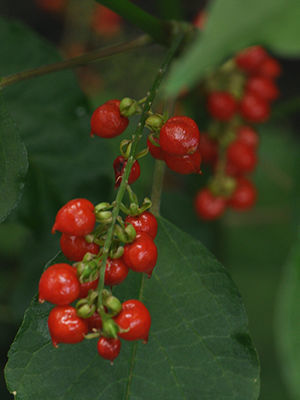
Name: Rivina humilis
Zones: 7–10
Size: 1 to 2 feet tall and wide
Conditions: Partial shade; moist, well-drained soil
Native Range: Southern United States, the Caribbean, Central America, and tropical South America
Pigeonberry is a sprawling, perennial herb that likes to grow in the shade of trees or shrubs. Its whitish pink flowers, while very small, are clustered into attractive bottlebrush spires. Abundant red fruits, which are reminiscent of chile pequin, often appear while the flowers on other stems are still blooming, creating an attractive counterpoint.
4. Velvet-Leaf Mallow
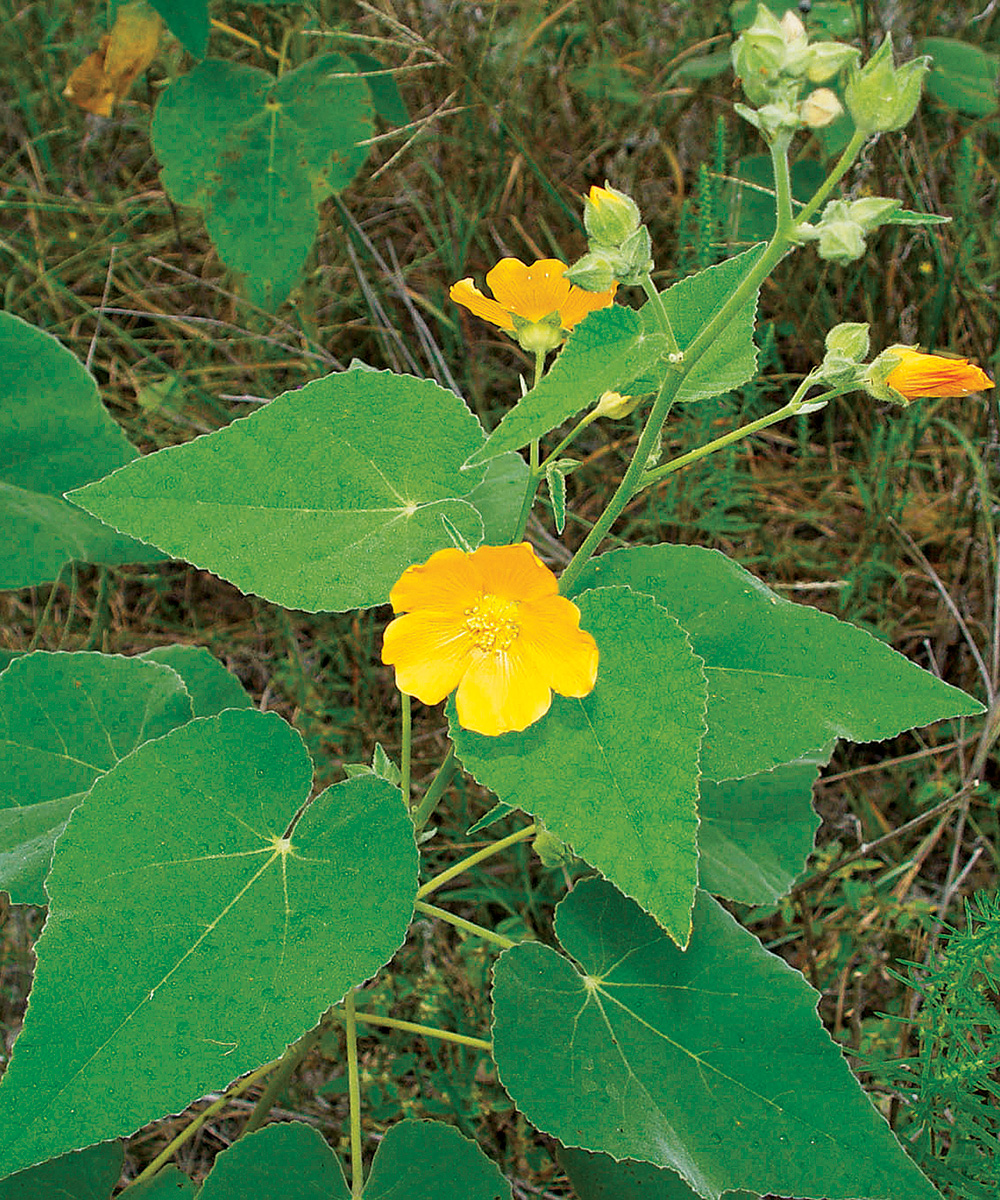
Name: Allowissadula holosericea
Zones: 7–9
Size: 3 to 5 feet tall and wide
Conditions: Partial shade; well-drained, rocky soil
Native Range: Southern United States
This drought-tolerant mallow with fuzzy, heart-shape leaves is so distinctive that I know a horticulturist who named his daughter after it. Velvet-leaf mallow has delicate, yellow-orange, five-petal flowers that bloom as long as the weather is warm. The fuzzy leaves are an open invitation to passing humans; hardly anyone can resist reaching out to touch them. Plant it in a dry garden spot that gets too much dappled shade for the more typical xeric plants.
Karen Beaty is a horticulturist for the Lady Bird Johnson Wildflower Center in Austin, Texas.
Fine Gardening Recommended Products

Buffalo-Style Gardens: Create a Quirky, One-of-a-Kind Private Garden with Eye-Catching Designs
Fine Gardening receives a commission for items purchased through links on this site, including Amazon Associates and other affiliate advertising programs.

The Crevice Garden: How to make the perfect home for plants from rocky places
Fine Gardening receives a commission for items purchased through links on this site, including Amazon Associates and other affiliate advertising programs.
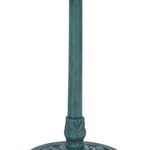
Alpine Corporation 28" Tall Outdoor Birdbath with Scrollwork Decoration Yard Statue
Fine Gardening receives a commission for items purchased through links on this site, including Amazon Associates and other affiliate advertising programs.








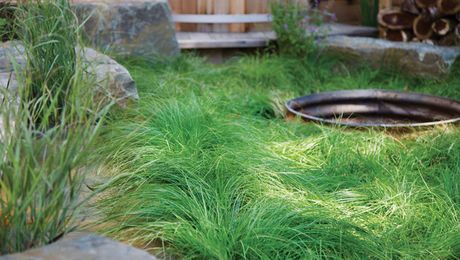










Comments
Log in or create an account to post a comment.
Sign up Log in